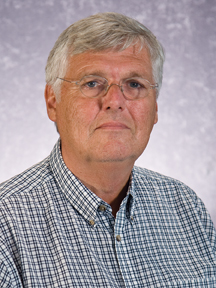 A new, free, online tool to help farmers make better-informed operational decisions has been developed by software experts at Iowa State University.
A new, free, online tool to help farmers make better-informed operational decisions has been developed by software experts at Iowa State University.
The program — I-FARM — assists farmers, bankers, extension and cooperative people, and anyone else interested in finding out more about farm management, in understanding how to get the most out the land at the least cost.
The software was developed by Ed van Ouwerkerk and draws on information collected from various state, regional and national sources.
The I-FARM program allows farmers to input various aspects of their operation along with the location of their farm. The computer software then predicts and compares farming outcomes.
“This farming model gives you opportunities to calculate alternatives and see the benefits of each,” said van Ouwerkerk, a research associate and software developer in the department of agricultural and biosystems engineering at Iowa State University.
The program starts with the location of the farm. Using Google Earth®, the farmer can locate his or her farm and highlight up to 20 fields that the farmer wants to evaluate.
The farmer then inputs the crops intended for the field, the rotation cycle he or she will use, the types and amounts of fertilizer, the farm equipment used, typical yield and many other factors.
The program then tells the farmer what his or her costs may be, the labor required, amount of fuel needed, how much soil erosion he or she can expect, the amount of nitrogen and other chemical emissions the farm will produce, the amount of income (this function uses frequently updated market prices) and the subsidy payments the farmer can expect get from the latest farm bill.
The farmer can input one scenario with one set of inputs, and a second scenario with different inputs and compare the two, according to van Ouwerkerk.
The program is designed to help the farmer, and doesn’t make any choices for the producer.
“The program gives information, and lets the farmer make the choices,” said van Ouwerkerk.
For instance, a farmer might discover his inputs will result in greater soil erosion. The farmer can use the information to choose to plant different crops.
“The software knows the slope of the land because it uses Google Earth. If the farmer looks at the outcomes and sees that he is losing too much soil, he may choose to change crops,” said van Ouwerkerk. “Maybe he shouldn’t plant corn here, maybe he should plant a perennial, like alfalfa.”
The software also can help the producer with many aspects of the farm.
“This farming model gives you an opportunity to calculate alternatives to different crop rotations and see the benefits of each,” he said. “That includes environmental benefits, ammonia release, erosion, perennials instead of annuals, and if you have cover crops instead of only annuals and different tillage practices.”
The program should help farmers make smart choices about their operations, said van Ouwerkerk.
“Farmers find their information about farming from a variety of sources and often follow patterns because of habit,” said van Ouwerkerk. “This software will tell you what is scientifically right.”
Van Ouwerkerk also thinks this tool will be valuable for extension agents, bankers and anyone else who is interested in looking at farming practices and profitability.
The program includes a short tutorial to help first-time users. Jim Penney, a consultant for the Iowa Learning Farm, is meeting with farmers to show them how to use the site.
“Now that the farmers are looking forward to the growing season, I think we will have more interest in the program,” said Penney. “We’ve had a good deal of interest from farm suppliers and co-op agronomists that we’ve worked with, and I expect that to go up, too.”
Penny suggests that farmers go to the site and try it themselves, and if they have problems, they can contact him at (515) 290-2231 or van Ouwerkerk at (515) 294-4037.
The project started as a program to cover three states – one that would give farmers answers on converting their farms from crops-only operations to crop-and-livestock operations. As the scope of the project grew, van Ouwerkerk said more and more people got involved.
Because the project touches so many aspects of farming – production, soil management, and fertilizer runoff – the project began to gain interest from various organizations. In the end the project received funding from the U.S. Department of Agriculture, the Department of Energy, the National Science Foundation and the Leopold Center for Sustainable Agriculture at Iowa State.
Contacts:
Ed van Ouwerkerk, Agricultural and Biosystems Engineering, 515 294-4037, evo@iastate.edu
Jim Penney, Iowa Learning Farm, 515 290-2231, jp@hoic.com
Dan Kuester, News Service, 515 294-0704, kuester@iastate.edu